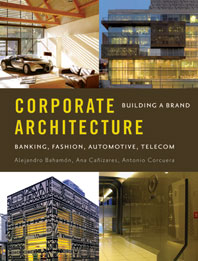The Trenton Bath House, just restored by Farewell Mills Gatsch, respects Louis Kahn’s original design, even if his full vision remains unrealized.
To many architects, Louis Kahn’s 1955 Trenton Bath House in Ewing, New Jersey, just restored by Farewell Mills Gatsch Architects (FMG), exudes everything that worked in 20th-century architecture. This concise design for the Jewish Community Center in a Trenton suburb engages in a thoughtful dialogue with history using modest materials. But the Bath House also is a disappointment. It began crumbling soon after completion, and Kahn’s larger civic vision for the site proved too idealized for the clients to take on.
The Louis I. Kahn Trenton Bath House (1955) is famous for the sense of monumentality achieved by its Greek-cross plan, elegant proportions, and cubiform volumes, all executed with the humblest materials — concrete block and asphalt roof shingles. The structure was recently restored by the Princeton firm of Farewell Mills Gatsch Architects.
Today, encountering the Bath House is an experience that alternates between sublime and banal. From a distance, the windowless, concrete- block boxes resemble forgotten mechanical buildings. Yet, even to the uninitiated viewer, there must be something mesmerizing about the cruciform plan and the four dark pyramids that float just above the bare walls, covering the enclosed volumes and leaving a central courtyard open to the sky. Kahn’s expression flows out of these roofs. They define the building’s oblique historical reference. Structurally, each pyramid rests on four “hollow columns”—supports that serve as mechanical spaces or as circulation for changing rooms—central to Kahn’s notion of “servant” and “served” spaces. The Bath House, now owned by the Ewing Senior and Community Center, is aggressively simple, embracing the initial assignment’s limited program and scarce means.
As in countless cases, the abstract, architectural forms were developed seemingly without regard to their resistance to rain, wind, and normal use. The Trenton Bath House began failing physically almost immediately after construction, even though it is an open-air pavilion with practically no building systems. Some shortcomings might be due to a lack of sophistication in 1950s construction techniques. In certain places, concrete slabs were laid directly on the ground, leaving them vulnerable to the earth shifting underneath. Prior to the recent restoration, the floor inside was buckling in several directions.
However, other technical failures seem almost intentional, perhaps reflecting Kahn’s obsession with ancient ruins. The walls were placed directly beneath the roofline of the pyramids, which have no gutters. According to interviews with Anne Tyng, Kahn’s longtime collaborator, Kahn imagined water “washing over” the rough walls. This meant that water has washed through the walls during the past 50 years, breaking them down drop by drop. The Princeton-based firm FMG, along with restoration contractor Wu and Associates, took on the painstaking effort of re-creating the concrete aggregate for the masonry-block walls using a Delaware River gravel, and even matching the rough mortar smears of the previous masons. The team also added a liquid-applied waterproof elastomeric membrane to the top course of block, allowing water to wash poetically down the wall without ruining it.
The restoration returns the structure to the way it looked in the late 1950s. Yet even then, it was already short of Kahn’s vision, as Susan Solomon’s exacting study, Louis I. Kahn’s Trenton Community Center (2000), reveals. As a result of disagreements among the Jewish Community Center’s board, the Bath House is the only built section of Kahn’s original design. For the restoration, due to restrictions attached to the funding ($750,000 from the Mercer County Open Space fund and a matching grant from the New Jersey Historic Trust), along with lack of community support, the planners and architects were confined to re-creating what Kahn executed, not what he intended. His full plan called for a classic grove of trees, a common public area in front, and a pedestrian-oriented procession to the structure [RECORD, June 2007, page 63].
Kahn imagined a civic space for suburbia, a dignified place for nothing more than people going to the pool. His vision proved unrealistic in the 1950s, when suburbia was in its infancy. Today, in Ewing’s fragmented landscape—where office buildings and parking lots give way to gabled roofs and driveways—Kahn’s vision is even more important and much less possible.
If Kahn’s ideal civic realm only exists within his design, and his forms only speak to those familiar with their references, it is still a monument to the search for a humanist architecture. Its persistence and its failures indicate we are still on that search.
Aleksandr Bierig, a recent editorial assistant for Architectural Record, is now a graduate student at Princeton University’s School of Architecture.








